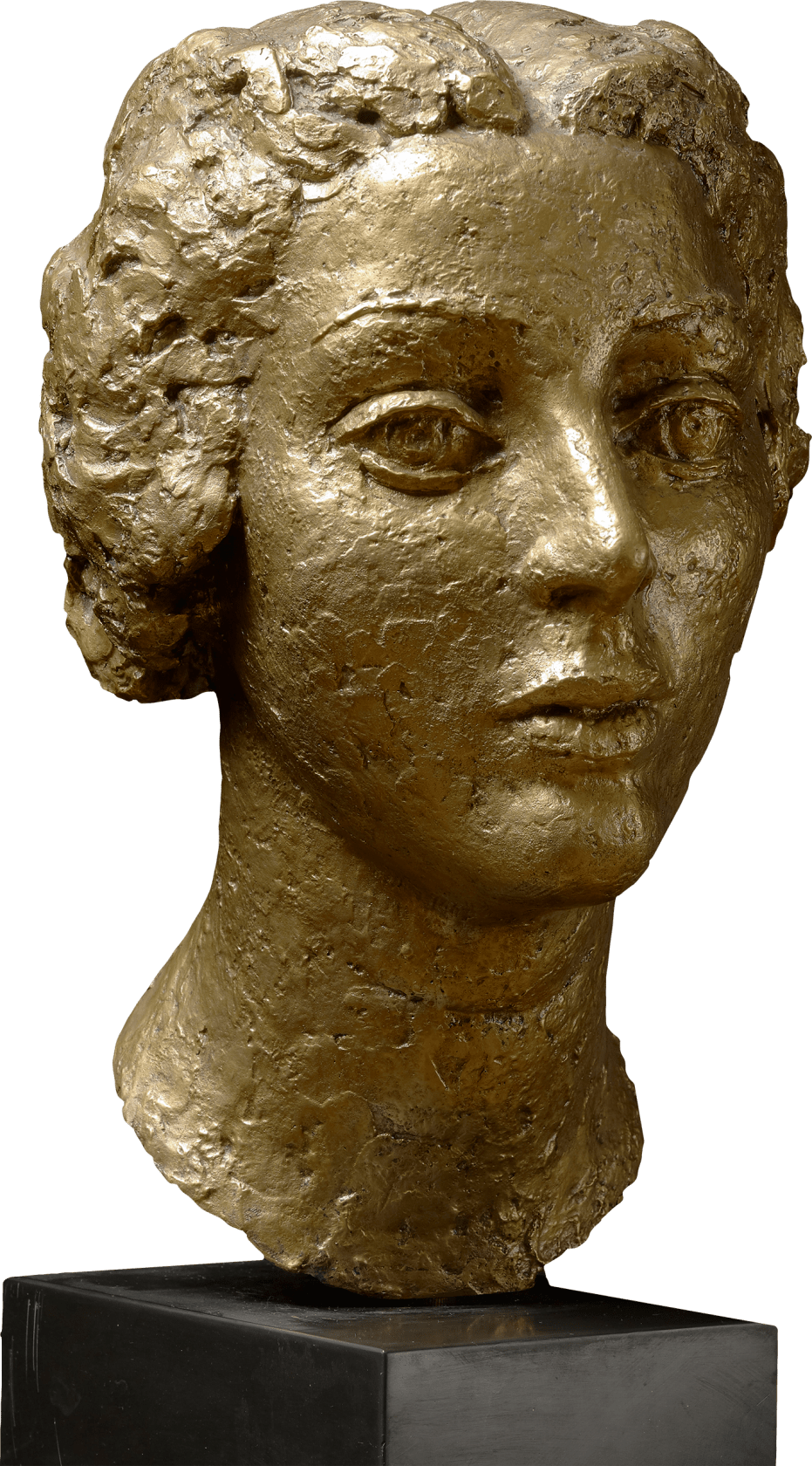

Frank Dobson
(1886-1963) Second portrait for Auriol SalamanProvenance
Private collection, UK;
Gorringe's, East Sussex, 29 April 2015, consigned by the above;
Philip Mould Gallery, London, acquired from the above.
Literature
Jason, N., and Thompson-Pharoah, L. (1994) The Sculpture of Frank Dobson. Much Hadham: Lund Humphries, p. 140.
From a style deeply rooted in Cubism and even Futurism, Frank Dobson moved to the softer forms of the female figure, drawing on the work of Aristide Maillol (1861-1944), while also admiring wood carvings and African sculpture by Paul Gauguin (1848-1903).
This portrait bust was commissioned by Auriol Salaman, Dobson’s studio assistant at Manresa Road in Chelsea. It is the second, more highly finished and more sumptuous version of this composition, the first of which was executed in 1934 in terracotta.[1] Auriol Salaman was born in 1912, the daughter of Elkin Josiah Salaman, whose father had been a wealthy merchant dealing in ostrich feathers. Auriol’s uncle, Redcliffe Nathan Salaman, was the well-known geneticist and Jewish activist and her sister, Peggy Salaman, ‘a first-rate pilot’, beat the world record for flying a light aeroplane from London to Cape Town in six days in 1931.[2]
From a style deeply rooted in Cubism and even Futurism, Frank Dobson moved to the softer forms of the female figure, drawing on the work of Aristide Maillol (1861-1944), while also admiring wood carvings and African sculpture by Paul Gauguin (1848-1903). After being awarded a scholarship by the Leyton Technical School to study art at the age of...
This portrait bust was commissioned by Auriol Salaman, Dobson’s studio assistant at Manresa Road in Chelsea. It is the second, more highly finished and more sumptuous version of this composition, the first of which was executed in 1934 in terracotta.[1] Auriol Salaman was born in 1912, the daughter of Elkin Josiah Salaman, whose father had been a wealthy merchant dealing in ostrich feathers. Auriol’s uncle, Redcliffe Nathan Salaman, was the well-known geneticist and Jewish activist and her sister, Peggy Salaman, ‘a first-rate pilot’, beat the world record for flying a light aeroplane from London to Cape Town in six days in 1931.[2]
From a style deeply rooted in Cubism and even Futurism, Frank Dobson moved to the softer forms of the female figure, drawing on the work of Aristide Maillol (1861-1944), while also admiring wood carvings and African sculpture by Paul Gauguin (1848-1903). After being awarded a scholarship by the Leyton Technical School to study art at the age of eleven, Frank Dobson continued his education at the Hastings School of Art and was then apprenticed to the sculptor William Reynolds-Stephens (1862-1943) between 1902 and 1904. He then moved to Cornwall, where he became inspired by the dramatic, brightly lit landscape and, sharing a studio with the artist Cedric Morris (1889-1982), went on to produce a series of watercolour paintings. Dobson settled permanently in Newlyn in Cornwall after studying further and working briefly in Scotland and London. It was in Newlyn that he met Augustus John (1878-1961), who offered him a solo exhibition in 1914 at the Chenil Galleries in London.
A year after the start of the First World War, Dobson enlisted in the Artists’ Rifles, travelling to France in 1916. However, after a severe stomach ulcer was diagnosed, he was sent home in 1917 and did not return to the front line. He was commissioned by the Ministry of Information in 1918 to paint the barrage balloon apron at Canvey Island in Essex [Imperial War Museums], a series of steel cables suspended between balloons, intended to trap low-flying enemy aircraft. Although no aircraft were captured in these nets, they did force German aircraft to fly higher, making them more vulnerable to attack.
Amongst Dobson’s most famous sculpted portraits are likenesses of the ballerina Lydia Lopokova, the actress Tallulah Bankhead and the writer Osbert Sitwell. He exhibited at the Mansard Gallery in 1920, the Leicester Galleries by invitation of Wyndham Lewis (1882-1957) in 1921 and again in 1927. He exhibited at the Venice Biennale in 1924. Henry Moore (1898-1986) nominated Dobson to become the head of sculpture at the Royal College of Art in 1946 after a large public retrospective of his work six years previously. He is now recognised as one the most original and important British sculptors of the twentieth century.
[1] Jason, N., and Thompson-Pharoah, L. (1994) The Sculpture of Frank Dobson. Much Hadham: Lund Humphries, p. 140
[2] Dunwoody, C. H. (1931) 'What's Ahead for Aviation?', The Rotarian. Vol. 40. No. 1. p. 20.











